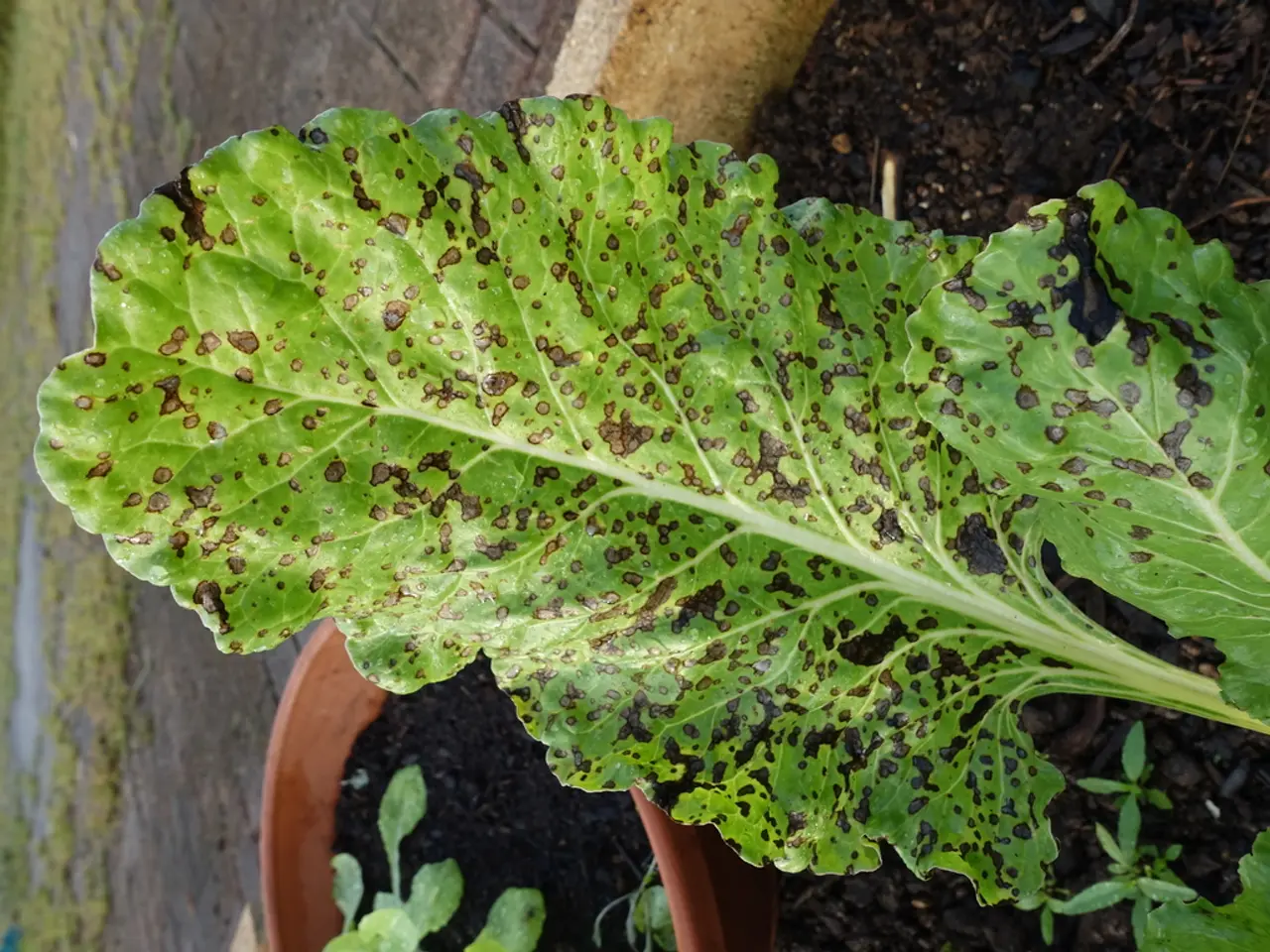"Struggling with dark splotches on your Monstera plant's foliage? Discover methods to eliminate them!"
Monsteras, often known as the "Swiss Cheese" plant due to their large, heart-shaped leaves with perforations, are a popular choice among houseplant enthusiasts. However, these plants can sometimes develop black spots on their leaves, which can be concerning for owners. This article aims to provide a clear and straightforward guide on identifying the causes and fixing black spots on Monstera leaves.
Causes of Black Spots
Black spots on Monstera leaves can be caused by several factors. Common culprits include fungal or bacterial infections, overwatering leading to root rot, sunburn, physical damage, and pests like spider mites and mealybugs.
Fungal or Bacterial Infections
These infections often cause black spots and can spread quickly. Removing affected leaves promptly helps reduce the spread. Treatments such as copper fungicides or natural remedies like milk diluted with water (1:1 ratio) may help control fungal spots, although specific data on Monsteras is limited.
Overwatering and Root Rot
Excessive water can cause root rot, impairing nutrient absorption and leading to black or dark spots on leaves. Ensure your Monstera is planted in well-draining soil with pots that have drainage holes, water only when the top 2 inches of soil are dry, and avoid waterlogging.
Sunburn from Direct Sunlight
Monsteras prefer bright, indirect light. Too much direct sun can cause black or brown spots with dry, crisp edges. Move your plant to a location with filtered light or use sheer curtains to diffuse harsh sunlight.
Physical Damage or Shipping Stress
Black spots can sometimes result from mechanical damage during shipping or old, crowded roots causing stress. Inspect roots and untangle or trim if needed to improve plant health.
Preventing and Treating Black Spots
To prevent black spots, maintain a consistent temperature location for your houseplant during winter, adjust watering to prevent root rot, ensure proper light conditions avoiding direct harsh sun, treat fungal issues if suspected with fungicides or home remedies, and check for mechanical damage or root issues for overall plant care.
If dampness is a consistent problem, repotting the Monstera may be necessary as a last resort. Removing the darker leaves will help to redirect the plant's energy into the healthier foliage to help the plant recover and flourish.
Pests and Overwatering
Spider mites and mealybugs, common plant pests, can leave marks on Monstera leaves, with mealybugs causing brown spots. Overwatering can also cause Monstera leaves to turn yellow. To prevent overwatering damage, adjust the frequency of watering your Monstera, position it in front of a window, ensure the potting mix is well-draining, and check the moisture of the soil before watering.
Fungal Infections
Fungal infections can cause small black spots on Monstera leaves, often ringed in yellow or brown. Fungal infections thrive in moist environments and can be prevented by ensuring the plant is in good light and not too wet or too dry. Improving air circulation around the Monstera can also help prevent fungal infections. To treat fungal infections and reduce black spots, use fungicides such as Grower's Ally Fungicide Spray for Plants.
Pest Prevention
To prevent pest invasion, regular leaf inspection and cleaning leaves with rubbing alcohol is recommended, followed by a spritz of diluted neem oil.
Underwatering and Overfertilization
Underwatering can cause brown spots on Monstera leaves, particularly on the edges. If a collection of dark spots has led to larger dark patches on a Monstera, it's a good idea to trim the affected leaves to improve the overall appearance of the plant. To treat overfertilization, flushing the soil with lots of water can help bring the salt concentration down, and signs of an overfertilized houseplant include loss of leaves or wilting foliage.
Cold Damage
Cold damage can cause sections of Monstera leaves to go black and limp when exposed to temperatures below about 35F. To prevent cold damage, ensure your Monstera is kept in a consistent temperature location during winter.
By following this guide, you should be able to identify and address the causes of black spots on your Monstera leaves, ensuring your plant stays healthy and thriving.
- In the living room, the Monstera's large, heart-shaped leaves with perforations serve as a trendy decoration, complementing the colorful home-and-garden lifestyle.
- The kitchen, transformed into a makeshift laboratory, serves as a workspace for treating black spots on the Monstera leaves by mixing a solution of milk and water (1:1 ratio) for fungal spot control.
- The personal lifestyle choice to keep a Monstera plant in the living room also comes with the responsibility of ensuring proper decor, like moving it to a location with filtered light to prevent sunburn and black or brown spots.
- Gardening enthusiasts, appreciating the artwork-like aesthetics of Monsteras, might learn various techniques to prevent black spots, such as adjusting watering frequency to prevent overwatering and root rot.
- When performing a regular inspection for pests like spider mites and mealybugs in the home-and-garden, consider using diluted neem oil in a spray bottle to maintain the aesthetics and health of your Monstera in the living room.




